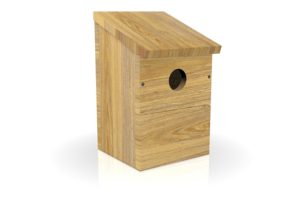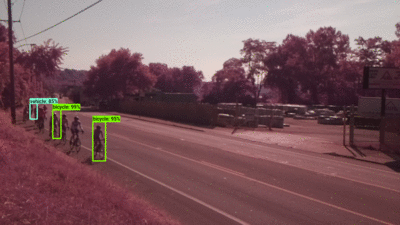Cities need good data. I helped Breandán MacGabhann set up the software for his air quality monitors around the city (you can check the readings out on Twitter – mine is on the Dock Road). Councillor Brian Leddin recently asked at a council meeting how many traffic counters were around the city – the answer was only three. We’ve a transport strategy coming up, a controversial incinerator planned for the outskirts of the city: wouldn’t it be great if we had more data to back up our decisions?
I’ve been thinking about this for a while but I lack the time to put it together – I wanted to write it down in case someone else was inspired to put something similar together.
Enter the Smart Bird Box
I’ve been following various attempts to measure air quality and traffic using the Raspberry Pi hobbyist computer. I think with recent advances in machine learning and solar power that it’d be possible to deploy a network of smart sensing devices that could measure traffic flow and air quality at various points around the city. The cost would be a fraction what commercial sensors currently cost. The data that they produce could be open to the public.
The enclosure

I think a bird box would be perfect for this. They are cheaply available and designed to be weatherproof. And they would also be handy for birds to nest in!
The power
A system would need to run without power. Solar panels on the roof of the bird box coupled with a battery pack would allow the system to run without mains power. The PiJuice project supplies panels and batteries that would be suitable for this.
Air quality sensors
Breandán has sourced relatively cheap sensors for temperature, humidity and particulate matter (). A NOx sensor could also be added.
Measuring traffic

Using a raspberry pi camera, machine learning could be used to detect how many cars, trucks, bicycles and pedestrians are passing. This article describes such an approach. Traffic counts could be recorded every five minutes. It’d make a great introductory machine learning project if someone was interested in messing around with TensorFlow.
Uploading data
The system could incorporate a GSM modem to upload the data it records every hour to a server. Or if there was a nearby wifi network with a friendly owner, our bird box could connect to that. A server script could dump the data into a database, and offer a way to request data for different time ranges. The system doesn’t need to be complicated.
Not forgetting the birds!
A second infrared camera could be added to record images of any nesting birds who chose to make our nesting boxes their home.
Privacy
The bird box would be recording images but would not be storing them, the machine learning would be on the device and in real time. Source code could/should be open sourced and auditable.
Baby steps
I’m describing a complete, standalone, remotely monitorable system. But really the way to start would be to find a place where power and wifi could be delivered with a view onto a busy street. My balcony overlooks the Dock Road in Limerick and I’d be happy to open it up to hackers.
Cost
Here’s a rough estimate of the hardware cost per box.
Bird box: €5
Power management: €60 for controller, €30 for battery, €90 for solar panels
Raspberry pi: €40
Sensors: particulate matter €20, temperature/humidity €5, NOx €10
Cameras: €30 each
Modem: €80
Total: €185 if power and wifi available, an extra €260 for solar power and cellular access. Plus top-ups for the sim card.
Please get in touch if you’d be interested in working on this!
